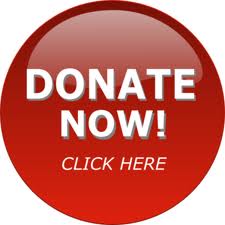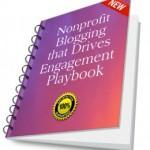Adopt an integrated inbound marketing and fundraising strategy.
If you don’t know what that means, you’re in trouble. Read on.
If you do know, are you really doing it?
It’s time to stop pussy footing around this.
Here’s why:
(1) Nonprofit marketing and fundraising have changed more in the past five years than the preceding 50. I’m not kidding! The digital revolution ended business as usual.
(2) Fundraising and marketing must be seamlessly integrated. They cannot be separate silos any longer.
Have you caught up with reality?
If you haven’t really changed your fundraising and marketing modus operandi, this is the year to take the plunge. Or else. You’ll be left behind. You won’t become anything other than “the best kept secret in town.” You won’t engage volunteers. You won’t acquire new donors. You’ll have trouble retaining old donors.
Per the just-released 2014 Nonprofit Communications Trends Report, the biggest challenges nonprofits face today are:
- donor acquisition;
- community engagement;
- brand awareness, and
- donor retention.
These are the things you must attack – head on – as you move forward into the next 12 months.
Don’t put this off. Begin today. You won’t win the war unless you pull together your team, and your resources, and get everyone together on the same page. And that page must be in line with the way today’s donors and advocates research, engage, and ultimately support organizations.
So… here are 4 practical things I’m going to implore you to do. Make these strategies your top priorities for 2014. If your eyes begin to glaze over, and you think I’m talking to you about stuff you consider unnecessary or superficial, throw a glass of water in your face and… open your mind.
The 4 Keys to Your 2014 Integrated Marketing and Fundraising Strategy
1. Start blogging regularly. Creating relevant content is perhaps the single most important thing you can do to attract new constituents online. Make your blog the hub of your content marketing strategy. Create all content for your blog; then leverage it (shorten or lengthen as appropriate) through all your other communications channels (e.g., fundraising appeal, annual report, grant proposal, newsletter, social media… everything!). Set a goal (create one blog post/week or month). You’ve already got lots of content – tell stories of the great things you’ve accomplished! Collect these stories and turn them into blog articles. What about tips you can offer based on what you do? Serve seniors? Offer heart-healthy recipes. Run children’s programs? Provide a list of family activities. Do policy work? Serve up a recommended reading list. Come from a constituent-centered perspective and get creative! [You can get a Blog Editorial Calendar from Hubspot to get you started].
 2. Create specific calls to action that direct folks to your website and inspire them to engage with you. The point here is to capture contact information for all the folks who come into contact with you. This is the only way you have a prayer of building relationships with these folks and ultimately converting them into supporters. Offer a free download of some useful tips or a reading list or a special report – stuff that visitors can access by signing up to hear from you.
2. Create specific calls to action that direct folks to your website and inspire them to engage with you. The point here is to capture contact information for all the folks who come into contact with you. This is the only way you have a prayer of building relationships with these folks and ultimately converting them into supporters. Offer a free download of some useful tips or a reading list or a special report – stuff that visitors can access by signing up to hear from you.
3. Create compelling, branded (non-generic) easy-to-use donation landing pages. One step forms that are simple, clean, and match your branding are optimal for conversions. Think you can’t afford to have more than one generic page? Think again. You can’t afford not to. The average donation made through a branded checkout page is 38% larger than the average donation made through a generic page, and donors who give through branded pages are 66% more likely to make a second gift. Folks find it visually disconcerting when they’re send to a non-branded donation form. They naturally wonder whether it’s a good idea to take the next step. Can they trust the site? Make your donation landing pages inviting, easy to navigate and persuasive. Put a photo that links to a story on them. Or even a video. Are you content just “getting lucky” when someone lands on your website, but then not taking charge of your luck so that this person learns anything more about you or ever visits you again? Time to take charge! [Hubspot offers a free Nonprofit Guide to Calls to Action and Landing Pages; I’m not endorsing them, just pointing you to a resource].
4. Create a plan to nurture your relationships. Call it “stewardship” or “customer service” or “constituent relationship management” or “moves management” or whatever you wish… JUST DO IT! Recognize that the majority of folks who connect with you are not yet ready to make a gift. Don’t give up on them by never reaching out to them again. Just like any relationship, you’ve got to build trust and loyalty. It’s your job to foster commitment – not just to broadcast stuff out into the ether; then beat up on folks if they don’t immediately see how “worthy” you are!
THE BOTTOM LINE: your constituents are now in control. Stop thinking you can just create a pretty newsletter, send it to folks with some text about how great you are, and they’ll respond with a gift. Stop thinking you can tweet about an event and folks will share it virally. You’re lucky if they open their mail or click on your emails. Folks have become adept at blocking out what they consider “noise.”
The only way to get folks to not ignore you is to get them to give you permission to communicate with them regularly. And let them tell you where and when. The lion’s share of most nonprofits’ constituents live digitally today. They decide how they’ll consume information. And if you make it easy – and meaningful, useful and fun – they’ll do it frequently. Because it’s about them.
This hugely impacts the old notion of the “donor pyramid.” That was about you and your goal to get folks to the pinnacle. It’s becoming a dinosaur. Folks don’t enter at the bottom and climb tidily up the ladder anymore. They encounter you at myriad entry points and they want you to engage with them wherever they are – not just when they get to some proverbial “top.”
To secure your nonprofit’s future you must develop strategies to engage with supporters wherever they engage with you. Inbound marketing helps you connect with future donors through your blog, website, social media, email marketing and even good ol’ face-to-face. It’s the way of the future. And it’s donor-centered.
Start Today.
Want to learn more about nonprofit blogging?
You may be interested in my Nonprofit Blogging Playbook. A great blog is one of the best investments you can make in acquiring and retaining more donors. Learn how with this 4-volume set that will teach you (1) blog fundamentals; (2) content folks will want to read; (3) how to use your content to engage folks, and (4) how to promote your blog so it builds momentum and drives more potential supporters to your website. If you buy all four, I offer a “Bundle Bargain” discount). If you’re a paid Clairification subscriber, you get an additional 50% off! Plus, I stand by all my Clairification products. If you’re not happy, there’s a no questions asked full refund policy. The only way to lose is by doing nothing.
Photo, Gizmo Logan Pahlavan. Photos: Flickr, Steve Bridger, Hidde DeVries, Ferran Pestana











This is overwhelming.
We use student interns (one semester at a time) to do Constant Contact.
Our website is handled by a volunteer.
We do not have a development director.
The ED and a few board members do the fundraising: one annual event, fee for services, direct mail, foundation and corporate grants.
Does this mean that small nonprofits (under $300,00 annual budget) can no longer serve their constituencies in this marketing-philanthropy atmosphere?
Jane
Of course not! You do, however, need to be communicating in ways today’s consumers access their information. Direct mail still works. But don’t limit yourself to offline. At least add email. Ask for email addresses on your remit pieces. Ask on your website. Ask at events. Let folks know it will cut down on your mailing/printing expenses so you can direct more of their donations to direct services. Then… don’t just email to ask. Also email to TELL. Demonstrate to donors their gifts are having specific, positive outcomes. Ask them for their feedback. Create an ongoing dialogue/relationship so folks feel like members of your family. Build your constituency slowly but surely so you can grow your budget and impact.